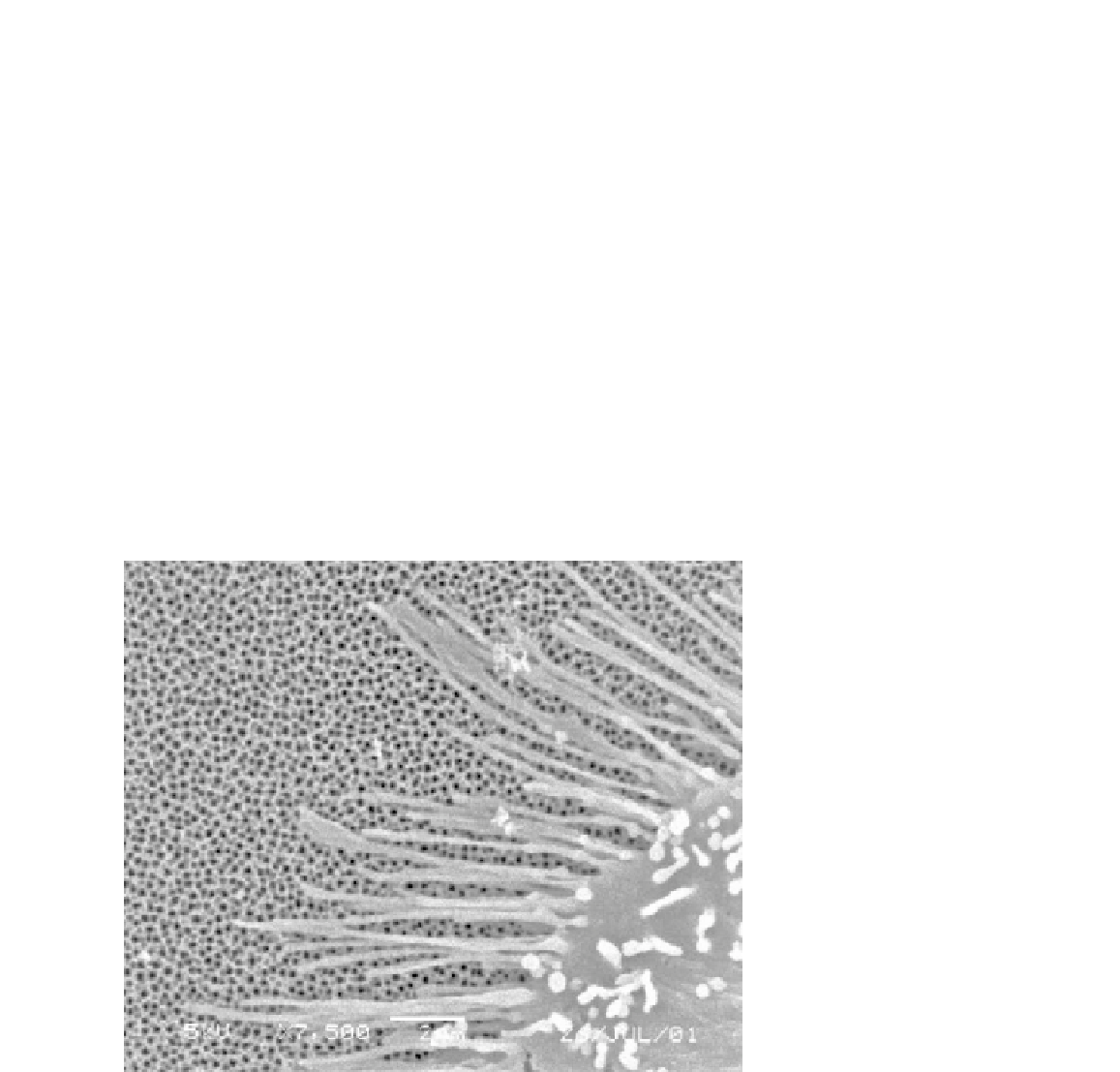Biomedical Engineering Reference
In-Depth Information
Bone morphogenetic protein-2 (BMP-2) is a potent osteogenic growth factor which has been stud-
ied extensively for bone regeneration. BMP-2 has been delivered directly from the titanium implant
surface or through a carrier scaffold/membrane for such purposes. It was shown that titanium implant
can be made “osteoconductive” by coating the surface with BMP-2
[52]
. Preclinical results revealed
higher bone regeneration around implant surfaces coated with BMP-2 than the uncoated surfaces.
Ectopic bone formation was reported in another preclinical study using BMP-2 delivered from tita-
nium implant surface
[53]
.
6.2.3.2 Micro- and Nanoscale Coating of HA/Calcium Phosphate/Alumina
Seventy percent of human bone is made up of inorganic mineral—HA [Ca
10
(PO
4
)
6
(OH)
2
]. Modifying
titanium surface biochemistry at the micro- and nanoscale level includes fabrication of highly adher-
ent HA and calcium phosphate. Aluminum oxide (alumina) deposited on titanium surface can serve
as a template on which HA or calcium phosphate can be coated. For such purpose, plasma spray
technique has been utilized
[54,55]
. Alumina deposited on titanium substrate by electron beam evapo-
ration and subsequent anodization produced highly adherent nano-porous coatings.
In-vitro
studies
with primary human osteoblast cells showed that the nanopores significantly enhanced the adhesion
of cells (
Figure 6.3
)
[56]
. These coatings can be further functionalized with osteoinductive biomol-
ecules. Nanoscale HA coating up to 25-40 nm were fabricated on titanium surface using sol-gel
FIGURE 6.3
SEM images of human osteoblast cells on nano-porous alumina showing cell
filopodia attaching to the pores of the material
[56]
.

